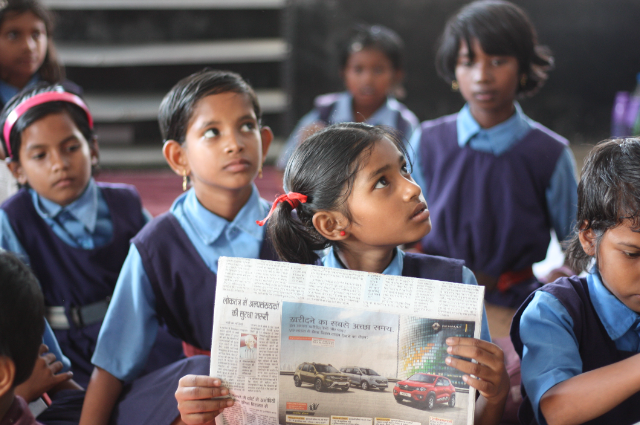
Photo by jaikishan patel on Unsplash
Gender inequality remains a pervasive issue in various facets of society, including education. In India, a diverse and culturally rich nation, religious practices often intersect with educational institutions, leading to unique challenges in promoting gender equality within schools. This essay delves into the intricate relationship between religious practices and gender inequality in Indian schools, exploring how traditional beliefs and customs can hinder the development of a fair and inclusive educational system. By examining the segregation of genders, restricted interactions between students, and the implications for a comprehensive education, this essay aims to shed light on the complexities surrounding this issue.
I. Segregation of Genders in Schools
One of the primary ways in which religious practices affect gender inequality in Indian schools is through the segregation of boys and girls. Many educational institutions, particularly those affiliated with conservative religious groups, enforce strict separation between male and female students. This separation is often justified on the basis of preserving moral values and preventing distractions. However, it inadvertently contributes to gender inequality in several ways.
A. Limited Social Interaction
Separate classrooms and facilities for boys and girls restrict social interaction between genders. While the intention may be to maintain a sense of modesty and decorum, this separation deprives students of opportunities to develop healthy relationships and social skills essential for life outside the classroom. Effective communication, cooperation, and understanding between genders are vital for building inclusive communities.
B. Reinforcing Stereotypes
The enforced segregation of genders can reinforce traditional gender stereotypes. Boys and girls are taught from a young age that their interactions should be limited, leading to the perpetuation of stereotypes that portray men and women as fundamentally different. This perpetuation of stereotypes can have long-term consequences, as it influences students' attitudes and beliefs about gender roles in society.
II. Restricted Perspectives on Gender
Religious practices in some Indian schools can also limit students' perspectives on gender and sexuality. Discussions about gender-related topics, relationships, and sexual education are often considered taboo or even sinful in some religious contexts. This restriction can have far-reaching consequences for students' understanding of their own identities and the diversity of gender experiences.
A. Inadequate Sexual Education
Many Indian schools avoid comprehensive sexual education programs due to religious sensitivities. This omission denies students essential information about sexual health, consent, and relationships, contributing to a lack of awareness and understanding regarding these critical topics. Consequently, students may face challenges in making informed decisions about their bodies and relationships.
B. Stigmatization of LGBTQ+ Identities
In some religiously influenced schools, the discussion of LGBTQ+ identities is entirely absent or stigmatized. This perpetuates discrimination and misunderstanding towards LGBTQ+ individuals, making it difficult for students to develop empathy and acceptance for diverse genders and sexual orientations.
III. Implications for Comprehensive Education
A comprehensive education should encompass a wide range of subjects, including languages, science, and mathematics. However, when religious practices exert a significant influence on school curricula, the focus can shift away from these crucial areas.
A. Language and Communication Skills
Languages are a vital component of education, enabling effective communication and interaction in a globalized world. When religious teachings dominate the curriculum, there is a risk that language education may be overlooked, limiting students' ability to engage in diverse social and professional contexts.
B. Science and Mathematics
Science and mathematics form the backbone of technological and scientific advancements. An education heavily influenced by religious practices may not adequately prepare students for careers in these fields. This can have serious implications for a country's progress and innovation, hindering its ability to compete on the global stage.
C. Critical Thinking and Problem-Solving
A well-rounded education fosters critical thinking and problem-solving skills, allowing students to analyze complex issues and develop innovative solutions. Religious practices that prioritize dogma over critical inquiry can hinder the development of these essential skills, limiting students' ability to adapt and thrive in an ever-changing world.
IV. Balancing Religious Freedoms and Educational Goals
Addressing gender inequality in Indian schools while respecting religious freedoms is a complex challenge. It requires a delicate balance between acknowledging the significance of religious practices and upholding the broader goals of education, including gender equality.
A. Dialogue and Understanding
One approach to addressing this issue is to foster dialogue and understanding between religious communities and educational authorities. Open and respectful communication can help bridge the gap between religious beliefs and the need for an inclusive education system. It allows stakeholders to find common ground and identify areas where compromises can be made.
B. Inclusive Curricula
Educational institutions can strive to create inclusive curricula that respect religious beliefs while also promoting gender equality and comprehensive education. This might involve incorporating gender-sensitive teaching methods, offering non-discriminatory sexual education, and emphasizing the importance of diverse perspectives in subjects like history and literature.
C. Teacher Training
Training teachers to navigate the intersection of religious practices and gender equality is crucial. Educators should be equipped with the knowledge and skills to create a supportive and inclusive learning environment that respects diverse beliefs while fostering gender equality.
Gender inequality in Indian schools, driven by religious practices, is a multifaceted issue with profound implications for students' development and society as a whole. The segregation of genders, restricted perspectives on gender and sexuality, and the implications for a comprehensive education all underscore the complexity of this challenge. However, by promoting dialogue, understanding, and inclusive curricula, it is possible to strike a balance between religious freedoms and the broader goals of education, ultimately fostering a more equitable and inclusive educational system in India.
